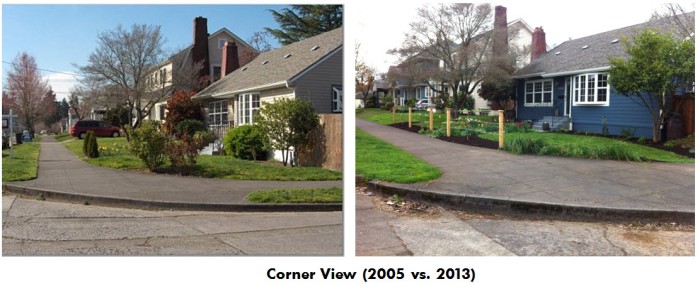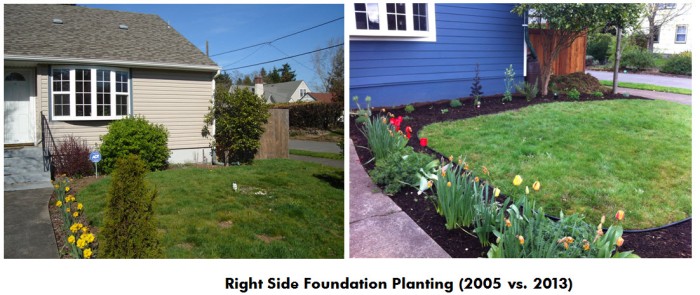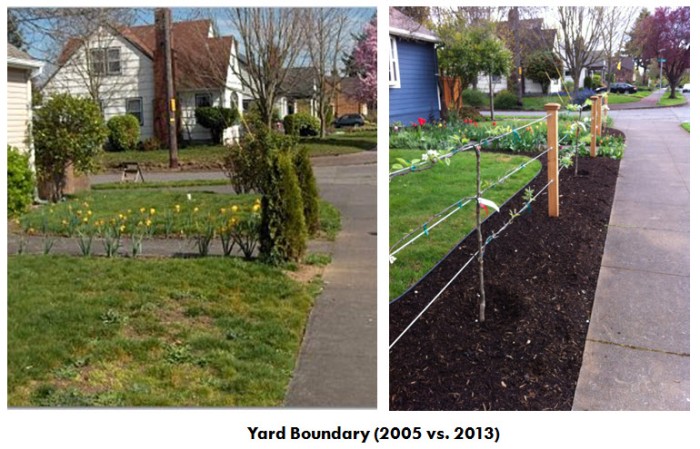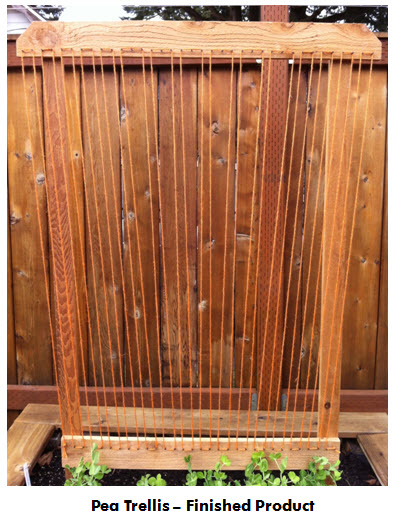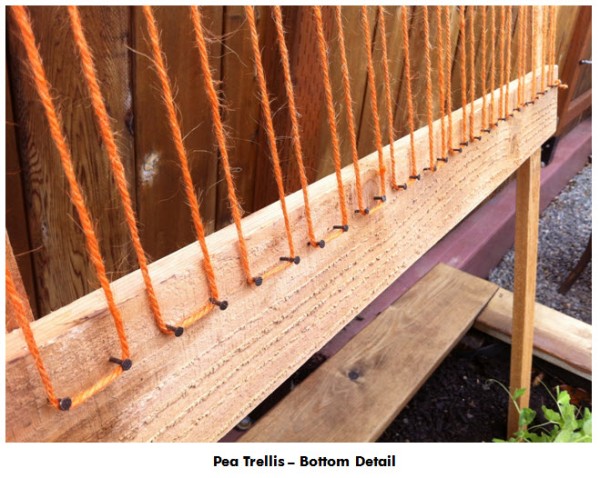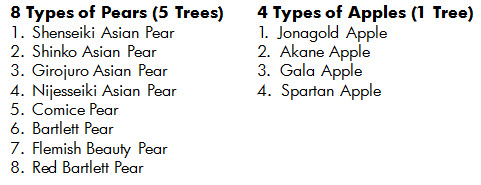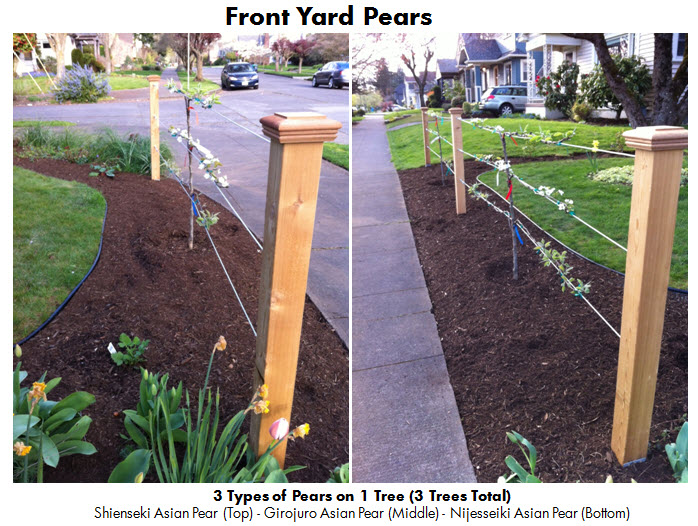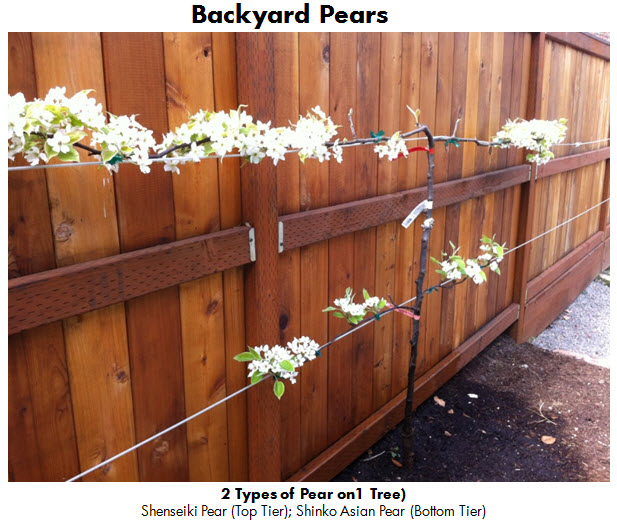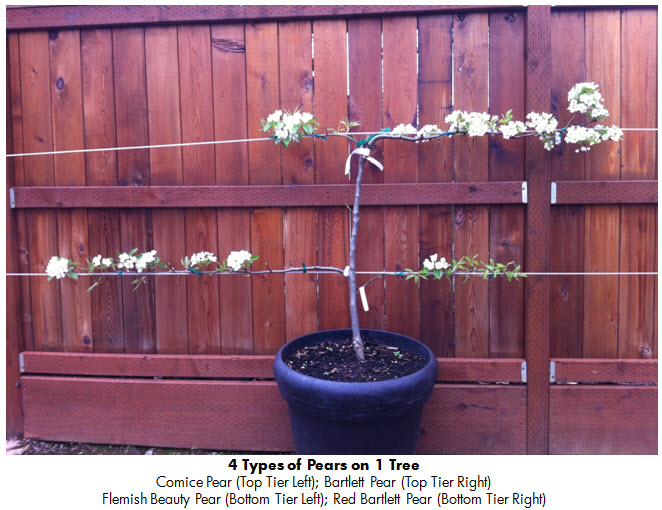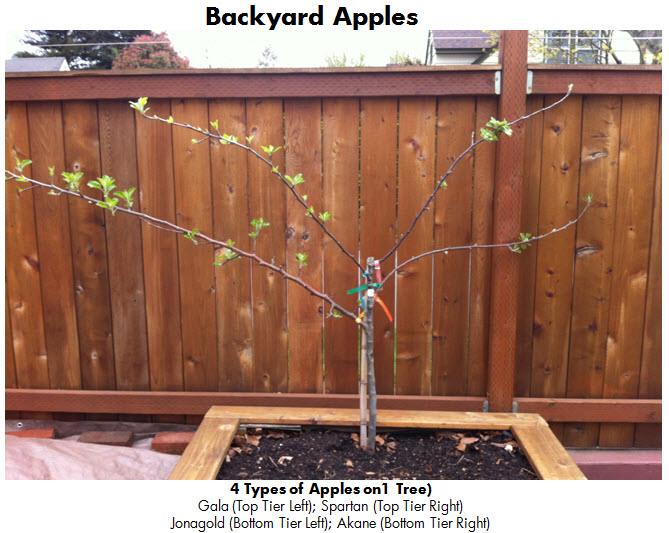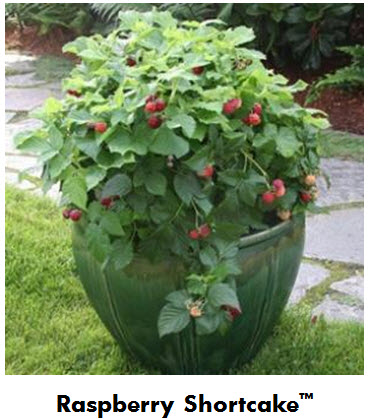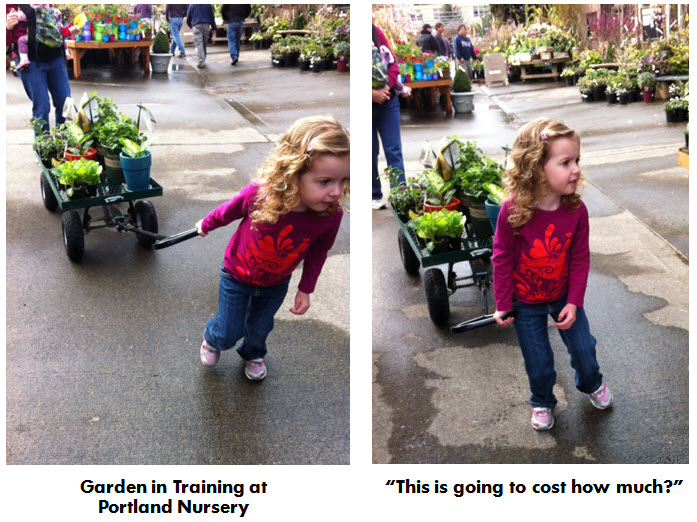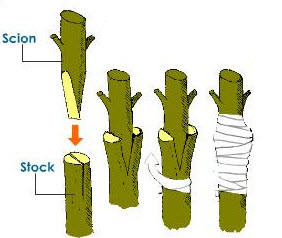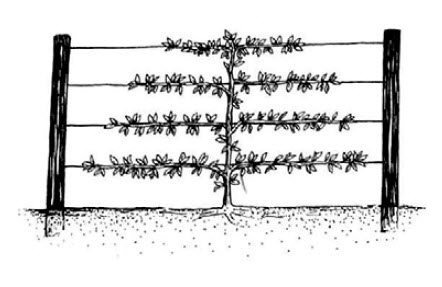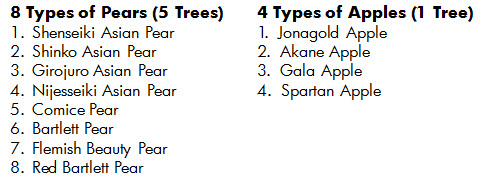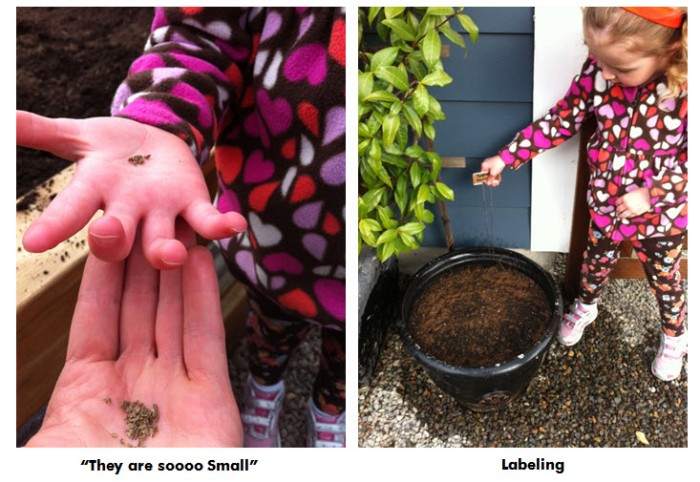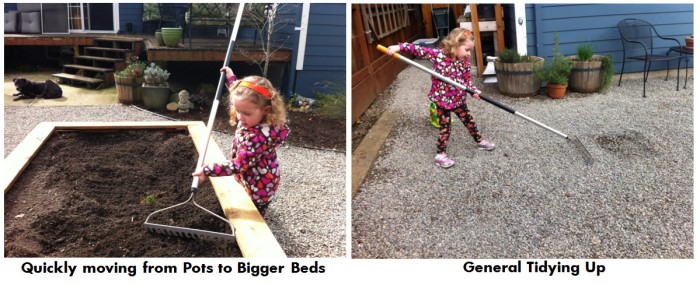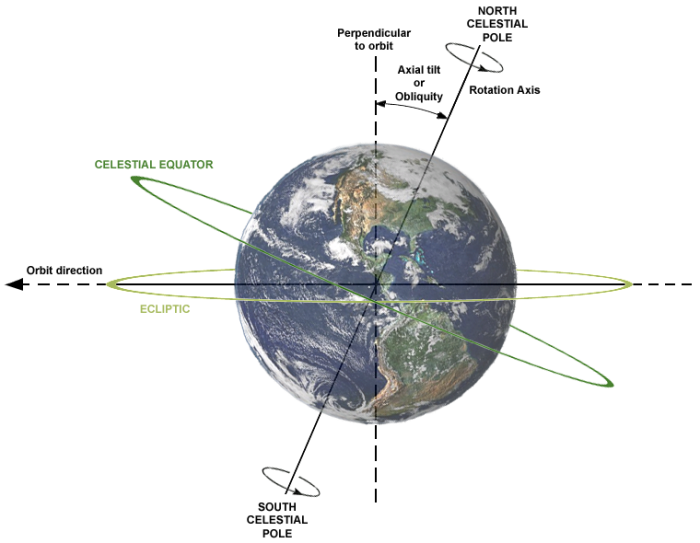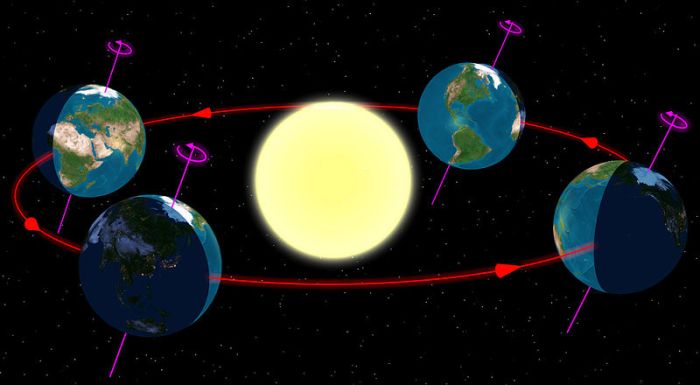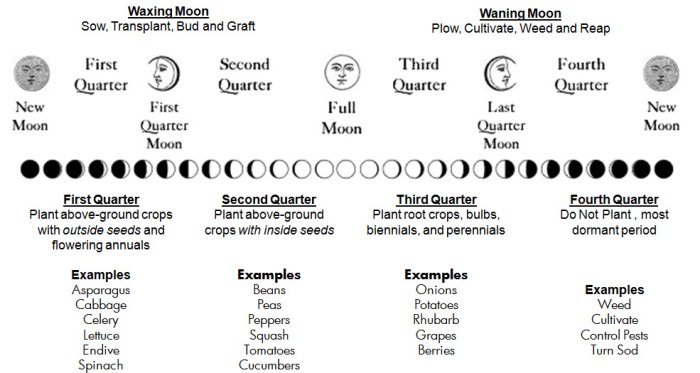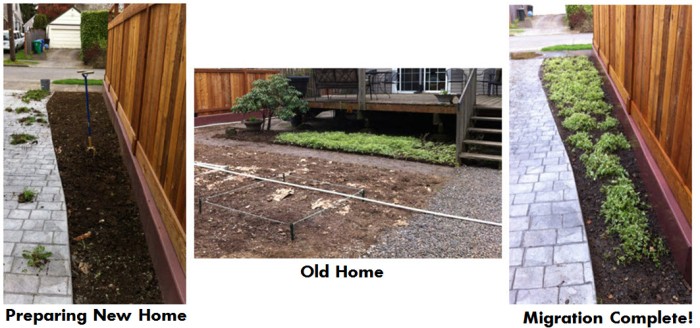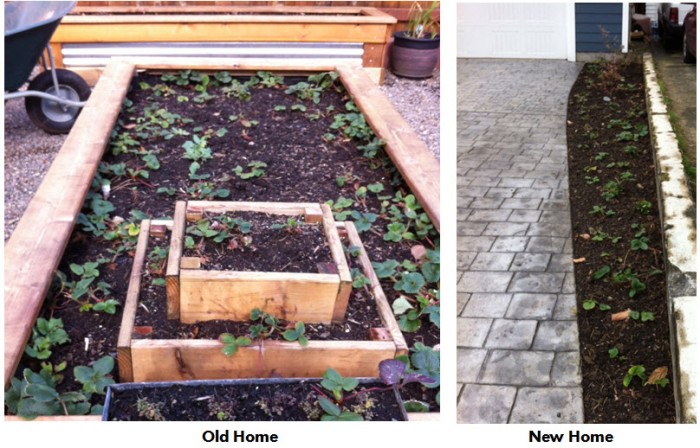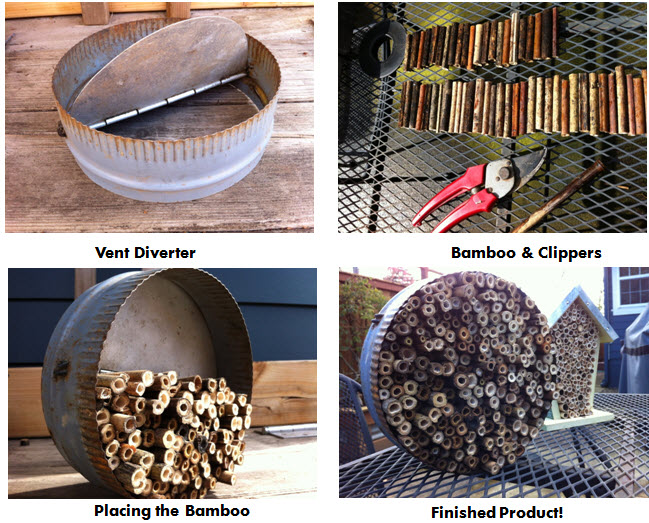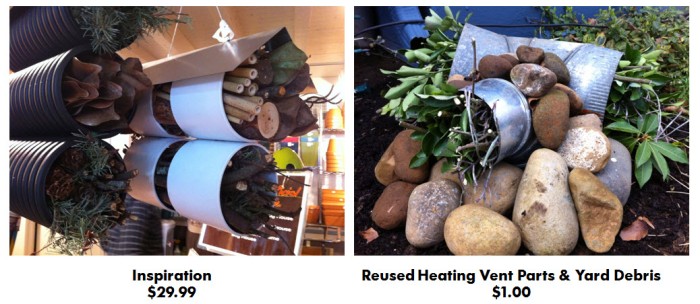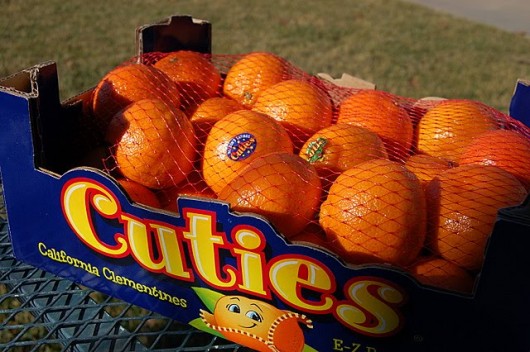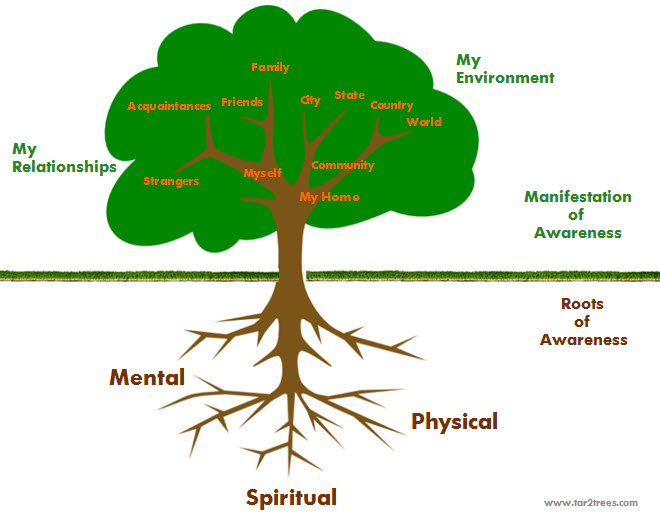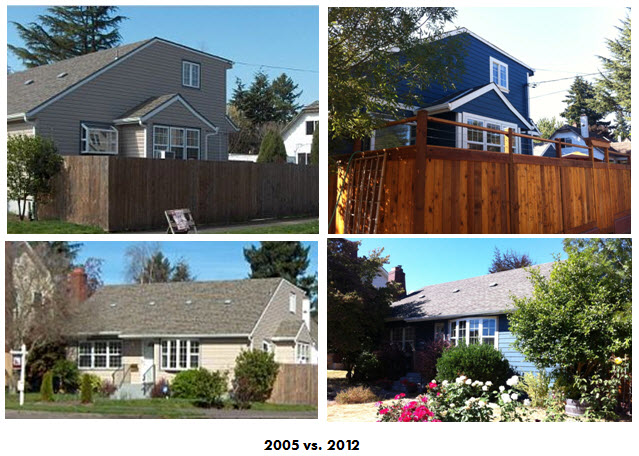I’ve had a keen interest in Green-Roofs for over 20 years and with the current changes coming in my life it may be the perfect time to explore this passion in more detail!
Fate Foretold by A Fortune Cookie…
…at least as it pertains to the next few weeks. Last night I was handed this fortune cookie, it could have gone to anyone else but it came to me:
Turns out I am travelling to “many exotic places” with the specific intent of looking within. In less than a week I’ll be jetting my way to the island country of Sri Lanka, where I will spend a week in remote lodge in the mountains near Kandy. It will take me close to 48 hrs to get to my destination, a very very long journey…to a place very very far away. The lodge I chose comes very highly rated (by complete strangers on travelocity) but it’s not the Hilton (which is the point of choosing it). I’m looking forward to getting to the know that family that runs the lodge, wandering around the nearby village, spotting monkeys and birds and visiting a nearby elephant orphanage.
This from the lodge’s website:
“The jungle is filled with wildlife that include 61 different species of birds of which 16 are endemic. Monkeys, barking deer and the giant squirrel roam about during the day while wildboar, owls, flying squirrels and bats appear at night.”
I’m still sorting out what gadgets I will need to take. After Sri Lanka I’ll be heading to India for work so I will be lugging along my laptop, but given the power situation at the lodge, I don’t expect I’ll have much use for it in Sri Lanka. Which is fine, my plan is to go as electronic free as I can. I will have my kindle so I can read some books, my new awesome DSLR camera (this will be its debut trip), and my phone for emergencies. Otherwise, I want to disconnect. I won’t pretend that this “disconnect” plan doesn’t make me a little anxious…I travel quite a bit for work…and do so alone…but this feels different. When I travel for work I stay connected to the world, I have a clear focus on what I want to achieve and when, and even though I may do a tourist side-trip here and there, I never really get out of work mode or take any real time for myself.
But – This trip is about letting my mind completely unwind, to completely let go go of my routines, my obligations, and my expectations. This trip is about waking up each day and allowing it unfold exactly as it will, without an agenda or anyone else’s influence. This trip is about leaving large empty spaces (physical and mental) for new experiences.
Does an Exact Copy of YOU Exist Someplace Else Right Now?
Maybe…at least that is what Brian Greene argues.
When I expanded the scope of my blog, I did so with the intent of including more posts like this. I have an insatiable curiosity when it come to understanding how things work, how things hang together, and how we mere mortals fit into the bigger cosmic and spiritual picture. If you follow my blog for gardening tips, you probably won’t get much from this post unless you would like the idea of the “other you” tending the exact same garden in a parallel universe!
Back to Brian and “The Other You”…Brian Greene is a physics and mathematics professor and director of the Institute of Strings, Cosmology, and Astroparticle Physics at Columbia University. His research uses superstring theory to suggest the idea of parallel universes that exist in what is called a multiverse, among many other theories he investigates…
Of course, this all hangs together on some basic assumptions that I’m going to go into deeper in other posts, like gravity, dark matter, and string theory, but for now, I just want to introduce this mind blowing concept.
Interested? Listen to this short and funny 5 minute Colbert Report Interview
Still Interested? Watch this 21 min Ted talk:
Want to really “get your geek on”? Listen to this RadioLab interview:
What do you think?
My learning process works best if I attempt to share what I learn…put the concepts into my own words and discuss with others. That is what I’m going to do with some follow-on posts that will expand on some of these concepts…over time I’m going to weave all of this into some concepts about THE MEANING OF LIFE and GOD. You know…the lighter topics.
Front Yard Makeover Progress
I’ve spent the last 5 years updating the inside of my house (new floors, new walls, new paint, new kitchen, upstairs master bath, etc…), building a garage, siding the house, and completely re-landscaping the backyard. Now it’s finally time to turn my attention to the wofully neglected front yard. I’m starting with the left and right front patches between the side-walk and the house (parking strips will come later) and just starting with the basics.
Accomplished in the last 6 weeks:
- Removed all the foundation plants from the front of the house
- Replanted the foundation areas with size appropriate, local habitat supporting plantings
- Carved out over 300 sq. ft. of planting beds & mulched
- Planted a berry patch between my property and the neighbors (3 Blueberry and 2 Huckleberry bushes)
- Planted pear trees across the front boundary as a living fence
- Relocated the rain barrels
Now for some pictures!

Pictures of the berry patch to come, it’s not quite finished, but as for the rest of the beds go now I just need to wait and watch it all grow!
Cheap Support
My body needed a break from sitting at my computer and my mind needed a distraction – which I took as signals it’s time to get outside and build something. I rooted around in my garage and found the following:
- String
- Some left over nails
- Some left over random pieces of wood
After about 20 minutes of tinkering I completed a much-needed pea trellis. I think it turned out pretty good! Not only do my peas now have something to climb up and support them, I feel revived and ready to get back to work – cheap support all around!
Moldy Seeds and other Lessons Learned
Seeds expire? What? You can’t just leave them in any old container in a damp and cold space all winter and expect to use them the following year? Who knew?
Clearly you can tell I’m new to starting plants from seed. Upon opening up my trusty seed box (Kermit the frog metal lunch box), which I kept outside all winter on my potting bench in our cold and wet NW climate, I was almost knocked over by the smell, and sight, of some very moldy seeds.
Even though that was a disappointing shock, it also presented an opporunity to start over this year (recurring theme in my life) with a new batch of seeds and little more experience. To that end, let’s start with a review and update of the original plan set forth last year as outlined in my Mini-Project: Learning from Seed post.
Mini-Project Name: Learning from Seed
Project Start: April 2012
Goal (RESULT): Grow 90% of the veggies this season from seeds (MET – Thanks only to my prolific Sun Gold tomatoess, they completely skewed the numbers.)
Objectives (RESULTS):
- Have more appreciation for what happens before I buy my plants “ready to go” (OBJECTIVE MET – I now totally and completely appreciate the ability to buy healthy starts at my local garden center.)
- Grow plants I can’t typically find at the local garden store (NOT SO MUCH – Unfortunately my more exotic veggies did not survive my neglect – turns out they are harder to grow – who knew?)
- Practice Patience (UMMM…)
- Save Money (COMPLETE FAILURE – Besides my 4 awesome Sun Gold tomato plants, some radish and beets that were started outside, and my herbs and flowers, I had to buy veggie starts for everything else. And to compound the failure I didn’t care for my leftover seeds and had to throw them all out this year!)
The “Insiders”
OK…so perhaps starting 247 plants indoors is a bit ambitious…here are the results.
- Marigold & Alyssum (SUCCESS – These fall into the “Easy Peasy Lemon Squeezy” category.)
- Basil & Sage (FAILURE – They Started out great in the grow pods but then stunted in the ground.)
- Thyme & Oregano (JURY STILL OUT – They disliked their 1st location so I moved these from pots into the ground and they finally took hold. They wintered over so I will watch them this year.)
- Chives (SUCCESS – These are a fantastic herb, they wintered over and grow great in pots, although I really don’t need many so a package of seeds was overkill.)
- Oak Leaf Lettuce (COMPLETE FAILURE – I moved these outside too early.)
- Spacemaster Cucumber (COMPLETE FAILURE – These started out fine in the pods but then stunted in ground. Although the one I gave to my Mom grew great…operator error?)
- Onions and Leeks (PARTIAL SUCCESS – I used these as companion plants. They fulfilled that part of their mission but they never did mature into something worth eating. I think they were crowded out.)
- Black Tula & Tumbling Juniper Tomato (PARTIAL SUCCESS – These never really did mature, I think I put them out too early and they got “stressed” but I did get some decent fruit that made a yummy sauce – see Saucy!)
- Sun gold Tomato (MY SHINNING STARS – although I only grew four and these are VERY easy to find as starts…not really worth starting from seed.)
The “Outsiders”
My outdoor seed starting results were much more impressive. I attribute this to not needing to transplant the pods, which didn’t work so well once in the ground, and that I used a square foot gardening template to place my seeds. I also believe that the type of template I used encouraged me to the use the right amount of seed starter soil and easily plant the seeds at the correct depth.
- Beets (OK – Only about 25% matured, this could have been due to the location and planting too deep)
- Carrots (FAILED – These didn’t mature , my lack of patience may have played a role here. Plus I planted these prior to learning about the square foot gardening technique so I may have planted them too close together.)
-
Mesclun Mix (FAILED – I started these outside too early.)
-
Plum & Red Radishes (SUCCESS – Plus I learned hot to make awesome tarragon pickled radishes!)
-
Snap Peas (SUCCESS – freshly picked and steamed peas is hard to beat!)
Seed Plan 2013 – Guiding Principles:
- I will only grow lettuce from starts
- I will resist the urge to buy 20 different types of tomato seeds when I can only realistically fit 8 mature plants in my yard
- I will focus ONLY on those special plants I can’t buy as starts
- I will be patient and let my slower growing root vegetables fully mature before picking
- I will share seeds
- I will store any important, left over seeds, properly…sorry Kermit
How My New “Living Fence” Has Connected Me to My Neighbors
My front yard “Living Fence” idea was inspired when I planted my backyard pears last year as a replacement for the bamboo I extracted. I wanted a way to create the impression of a “fence” in the front yard without actually putting up a fence. My front yard has been a pretty dismal place – overgrown and thorny foundation plants, weedy grass and no real habitat to support local birds, bees and animals. I live on a highly visible corner lot with a significant amount of foot traffic, so the idea of an open type of fence would not only protect my yard from “short cutters” but also define the space and better tie the landscaping in with the other cosmetic improvements I’ve made recently.
Over the last month I’ve been whittling away at my “Living Fence” project and I’m almost finished (just need to stain the supports). The results are better than I could have predicted. Not only does it look fantastic, but folks that would normally stroll right by are stopping, taking pictures, reading the tags, chatting with me – I even had a cars stop!
Since I’ve been on working on this project in the evenings, when most people are out for their after dinner strolls, I’ve met at least a dozen of my neighbors in more than a just “friendly wave” kind of way. They are compelled to stop and talk (in some cases invite me to their homes), and many have told me how excited they are to watch the new trees grow. One evening last week I talked to 6 different people – and mind you I wear headphones when I’m working so it takes an effort to get my attention!
Interestingly, some have expressed concern that I’ll “lose fruit” to people stopping by and picking it. My response has been “great”! With the addition of these pear trees I now have strawberries, blueberries, raspberries, and huckleberries all in easily accessible places that anyone at anytime can pick and enjoy. I have no desire to “protect” or “guard” the fruit that is produced – which is a very freeing feeling!
Ironically, my “fence” project (Do good fences really make good neighbors?) has connected me more to my neighborhood – what a curiously wonderful gift these trees have been both to me and my neighborhood!
My Orchard
As I mentioned in my Riddle: How Do You Fit 12 Types of Fruit Trees on 1 Average City Lot? I have managed to plant 12 different types of fruit trees on my average city lot – see the list of currently planted fruit trees and pictures below:
Stay tuned for an update on the rest of the front yard transformation!
I Have Found the Elusive Raspberry Shortcake!
I have been on a quest to locally procure BrazelBerries’s brand new plant out this year, the elusive Raspberry Shortcake. And yesterday while at Portland Nursery with my sister and the kids helping them shop – THERE THEY WERE! They had a about 20 in total, they had just come in that day and the checkout person assured me that we were indeed was quite lucky, these would no doubt be gone in by the end of the day. My sister and relieved them of 3.
My quest (OK, a strong word) has involved multiple trips to the PN (they are only being by a limited number of resellers both locally and online) only to find that they are out. “When do they arrive?” I naively asked, and they said, “We don’t know.” “Can you call me they do”, I asked, and they said “No”. After the 4th trip to PN and getting the same answers I gave up. I had not planned to go to PN yesterday (I was supposed to working and my wonderful boss gave me the day off so I could play around with my Sister and Nieces in their yard.) I didn’t even want to go to PN, I wanted to go the nursery down the street. I had been making so many fruitless (pun intended) trips there I was a little bitter. And then yesterday – THERE THEY WERE! (What is that saying about finding something when you quit looking????)
Why are they so special? I love raspberries but don’t have the room or desire to have long, prickly, out of control canes popping up all over my yard. These plants claim the following:
- Dwarfed so they stay small and compact (3′) but still produce normal size fruit
- Perfectly suited for containers and small yards/gardens
- No staking since they grow as more of a bush
- THORNLESS
Clearly I’m a little excited. All 3 are planted, 1 at my Sister’s house in a container, and 2 here in my newly tilled bed out front (stay tuned for a future post on that project).
This post also seems like the prefect excuse to thow in some more niece pictures…
Riddle: How Do You Fit 12 Types of Fruit Trees on 1 Average City Lot?
Answer: You plant grafted, dwarf, espalier (es-pal-YAY) trees! Well, at least that’s my answer. So far so good, between last fall and this spring I’ve planted 12 different types of fruit trees in locations of my yard that were either neglected or just hard to plant. Last fall I planted 3 trees in the backyard, and in the past few weeks I’ve planted 3 trees across my front yard to make a “living fence” (consider this post a teaser – I will go into detail on these projects in a future post). I purchased my trees already grafted and espaliered from my local nursery, each was $50, a bargain considering all the expertise and labor that went into developing these special trees.
Grafted and Dwarf: Grafting is basically attaching one or more plants together – in this case fruit trees. The scion is the upper portion of the grafted plant that will produce the plant’s shoots, leaves, stems, flowers. The stock (or rootsock) is the lower portion of the grafted plant that produces the roots. (see image below for this is just one type of grafting) When you graft more mature trees this can create a “dwarfing” effect on the final tree. Some advantages:
- Faster time to first fruit since the grafted trees started out older. This can reduce the first fruiting time from 9 years to 2 or 3.
- Built-in cross-pollination since grafted tree can pollinate itself instead of requiring a minimum two separate trees. Cross-pollination is essential to fruiting.
- Same size fruit as a “normal” tree but from a much smaller tree.
- Allow for more variety of trees to be grown in the same amount of space as a single tree
Espalier: The word espalier is French but it comes from the Italian spalliera, meaning “something to rest the shoulder against”. It used to refer to the trellis or frame on which such a plant was trained to grow, but over time it came to be used to describe both the practice and the plants themselves. It’s been around forever. In Europe in the middle ages it was used to produce fruit inside the walls of a typical castle courtyard without interfering with the open space. Today you can see it most commonly in vineyards. Some advantages:
- More energy of tree goes into fruit production instead of trunk and branch growth
- Space saving since it can be grown on a 2-dimensional plane, also allowing for planting in spaces that might otherwise go unused (i.e. hot sunny walls)
- Visual interest. There is almost no limit to the types of designs you can create.
- Alternative to traditions fencing that also supports wildlife. My new mason bees are going to be thrilled!
My Current Orchard: So far I’ve planted 8 types of pears (5 grafted trees), and 4 types of apples (1 grated tree). Stay tuned for future posts where I will go into details on my trees, the process of the planting them, and how the trees I planted last fall are progressing!
Gratitude Moment: A Child’s First Seed
Just when I thought gardening could not bring me more pleasure…insert child! Ok, maybe not ANY child, but it’s certainly true of gardening with my niece. I had a little taste of this last year when my neighbor’s little girl “helped me” with the bamboo extraction project….which elevated the experience from pure drudgery to something more as she laughed with joy as she repeatedly climbed and slipped down a pile of dirt.
A few weeks ago I was lucky enough to introduce my niece to gardening. I’m not sure how much she really understood but you could see the wonder and excitement in her eyes as we gathered our tools, seed packets, and pots and started playing the dirt.
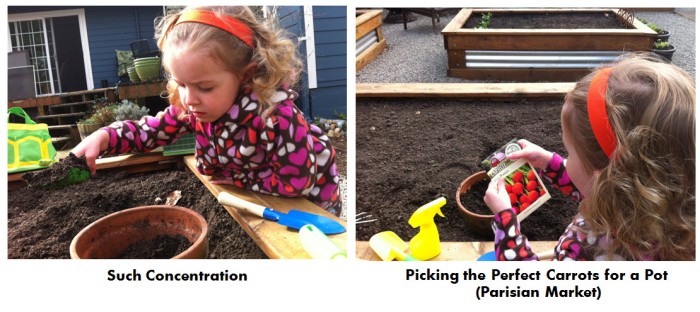 The first project was to fill her pot with dirt. After she chose her seeds she soon realized she needed a bigger pot, which was even more exiting because she got to select another pot and move more dirt!
The first project was to fill her pot with dirt. After she chose her seeds she soon realized she needed a bigger pot, which was even more exiting because she got to select another pot and move more dirt!
Then she used her brownie pan as her square foot garden guide. Given the size of the seeds she was actually placing 1 or 2 seeds per slot was impossible…which really wasn’t the point…it was fun just trying ( a perfect lesson of enjoying the process over results).
With the seeds placed and the pot watered she chose the perfect spot and placed her label. Then we put away our tools and started our clean-up (of course while singing the “clean-up” song).
I can’t tell you how good it felt to introduce my niece to gardening and to show her how to plant her first seeds. The gift for me was seeing life revealed through her new eyes. Everything became magical…from picking the tools from the wonderous array of options hanging in the potting bench area, picking the seeds from the pile of colorful options in the seed box, to the amazement of just moving gravel with Aunt Cathy’s rake.
It can’t be said enough how much we can learn from children. I am so lucky to be exposed to these lessons through my nieces. When life becomes overwhelming, when work becomes stressful, when I start to “worry” about the future instead of “experiencing” the present moment – all I need to do is visit my nieces – and pay attention. If I do this with the open heart and mind of a child, I always come away with a different perspective and a renewed love of life.
“In the beginner’s mind there are many possibilities, but in the expert’s there are few.”
– Zen Master Shunryo Suzuki
Tar2Trees Turns 1 Today!
Just a quick note to acknowledge that today marks the end of my first year, and more importantly, the beginning of my second year, writing this blog. I thought I would celebrate by sharing with you some yummy red velvet cake pops (imagination required).
I stared this blog with the intent of exploring a rather obtuse sounding concept called biophilia (see 1st Entry!). I began to sense a need for a change when I wrote Wrapping Up 2012, and formalized the new direction last month by writing My Conscious Living Wake-Up Plan.
Over the last month I’ve updated my blog by editing and consolidating my blog categories and tags to more accurately reflect the content I intend to write about, I’ve updated the site’s “tag line” from “My Journey into Biophilic Design” to “My Journey into Conscious Living”, and I’ve updated the About Me page. All of these seemingly mundane tasks have helped me because they are “actions”, however small, towards expanding my thoughts.
The change in direction feels right. Zooming out from the details and specifics of biophilia and biophilic design has freed (and fired!) me up to write about a broader set of subjects. I feel more more creative and I have a nice queue of projects, and associated blog entries, in the pipeline!
Thank you for reading and supporting my blog, the connection this blog provides with people like you, has been truly inspiring. I look forward to the next year together!
Happy Vernal Equinox!
Today is the beginning of Spring! Marked by the fact that the (light hours)/(dark hours) = 1, and moving forward it will conitunue to stay positive ratio until Sept 22 when it will be 1 again and start decreasing.
GEEK ALERT: For those geeks out there…the word equinox is derived from the Latin words aequus (equal) and nox (night) and Vernal is derived vernālis, which means spring….and if you really want to “get your geek on” checkout the images below:
Illumination of Earth by the Sun at the March (Vernal) Equinox:
Diagram of the Earth’s Seasons as seen from the North. Far right: December solstice:
What is Moon Planting?
I had no idea that the concept of planting by moon phases even existed until I stumbled upon The Old Farmers Almanac website (not to be confused with the Farmers Almanac…which I think is VERY confusing) when I was looking for the average last frost date and “what to plant now” guide for my area.
The concept of Moon Planting has been around FOREVER (dawn of time) but the actual science behind it is a bit unclear (completely unproven). But – I love learning about something new and I like the structure that Moon Planting suggests (which may be the real reason some people think it works)
I was having a hard time summarizing the Moon Planting suggestions I was finding so I cobbled together (with bits and pieces from various sites) a visual guide.
Moon Planting Theories
These are the main theories I could find (during my exhaustive 15min search via google) on why Moon Planting may work:
-
Gravitational pull affects how water is moved around in the plant and the soil (tidal theory). In theory then a waning moon would allow the water to be pulled deeper into the soil (good for root veggies) than during a waxing moon when the gravitational pull from the moon.
- The amount of moonlight affects certain plants growth cycle
These theories are somewhat “debunked” in the skeptics guide to Moon Planting. One debunking explanation that I find particularly interesting is that by not planting everything as soon as the weather turns nice you decrease the chances of being hit by an unexpected late frost since in some cases you have to wait until the next moon cycle. Plus, spreading out your planting lowers the risk of other environmental and pest related incidents.
I just may give this a shot this year…why not? I need a planting calendar anyway! Here is the link I’m using for my area for tracking the current moon phase.
What do you know about Moon Planting? Have you ever tried it?
Burning the Past
A few days ago as I was cleaning out some old boxes in the basement (major spring cleaning) I ran across a pile of journals. As I read the pages it became clear to me that until very recently (the last year or so) when I wrote in my journal the content was focused on angst, problems, and other negatively charged topics, while my more recent journal entries are more gratitude and solution based. This past year I’ve been learning more about how “energy” flows in our lives and the different types of energy we create and consume (Anabolism and Catabolism) and as I read I couldn’t help feeling that holding onto these journals wasn’t a very good use of the pent-up catabolic energy stored in the pages.
- Catabolism is the set of metabolic pathways that breaks down molecules into smaller units. These reactions release energy.
- Anabolism is the set of metabolic pathways that construct molecules from smaller units. These reactions require energy. Anabolism is powered by Catabolism
I sat there for quite a while looking at these journals, wondering what I wanted to do them, asking myself why I have been holding on to them for so long and what purpose they served in my life today. After contemplating this for quite some time I realized that there was no reason I could think of to keep them….but they could service a new purpose for me now, while at the same time releasing them and the energy they contained.
I have gotten into the habit of ending my day (when it’s not raining) by building a small fire in my backyard fire pit. I find that sitting by the fire at the end of the day is very relaxing – even meditative. I’ve been using the wood I salvaged from the deck demo project last spring that is not of high enough quality to build something new with as fuel. It was during one of these evening “burns” that it dawned on me to burn my journals – use those old words as fuel just like I was using the old deck wood.
As I burned the old journals I found that if I dumped a big bunch of pages on the fire at one time the fire would lose heat, and energy (not enough oxygen to feed the fire), but when I put the pages on one at a time, I could feel a burst of heat and energy along with a satisfying blaze, clearly this was not a process I could rush. As I burned each new page I was feeling mentally lighter and the physical heat from the fire felt wonderful on that chilly spring night. The next day I turned the ashes into one of my garden beds where it will help build life again….thus completing the circle of energy.
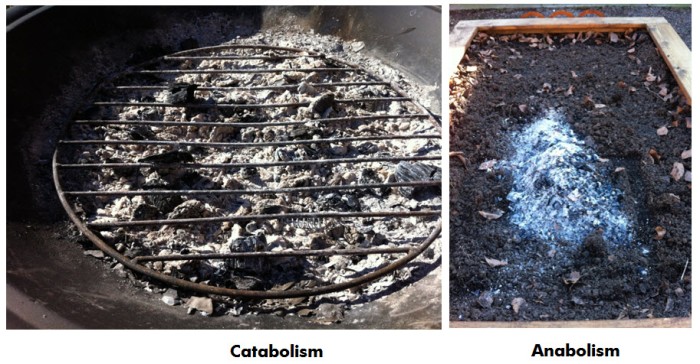 This process is an example of some of the actions I’m taking to grow my awareness tree. By burning these journals, and ceremoniously letting go of the past, I feel I’ve taken an important step towards my mental wellbeing.
This process is an example of some of the actions I’m taking to grow my awareness tree. By burning these journals, and ceremoniously letting go of the past, I feel I’ve taken an important step towards my mental wellbeing.
Bees Get “Buzzed” by Electricy and Caffine in Flowers
In response to my Bugging Out post a few days ago some folks have pointed me to some interesting reports on bee behavior. It turns out that understanding the “birds and bees” is more complicated than we were taught by our parents (just as I suspected…) Bees are using all of their senses when choosing which flowers to pollenate…and now scienctists are leaning that they also use electricity and caffeine!
Flowers get a Charge from Bees
The theory is that flowers that have a positive charge are more “attractive” to bees than those that don’t, and that positive charge is left behind by bees that have previously visited that flower.
“We think bumblebees are using this ability to perceive electrical fields to determine if flowers were recently visited by other bumblebees and are therefore worth visiting,” says Daniel Robert, a biologist at the University of Bristol, UK
According to Roberts, it’s been known that bees generate a positive body charge from flapping their wings and flying through the air, but they wanted to know if bees could pass on that electrical charge to the flower, and therefore attract future bees.
The team doing the testing first confirmed that the bees are positively charged (yes), then they confirmed that the positive charge is passed on to the flower (yes), finally they discovered that flowers that have a positive charge attract more bees than flowers that don’t! Fascinating! Since this is a new discovery it opens a whole new field of study when it comes to not only bees and pollination but bugs in general…pretty cool.

Dominic Clarke / Ref. 1
Bees get a Caffeine Buzz from Flowers
Did you know your local honey may contain caffeine? Your local bees know! It’s been found that caffeine found in the nectar of some plants, like citrus, can improve the bees memory, which helps them return to the most productive nectar producing flowers….as well as making the bee more active…creating “busier bees” if you will.
Listen to the March 8th Science Friday edition to learn more about the how electricity and caffeine influence bee behavior.
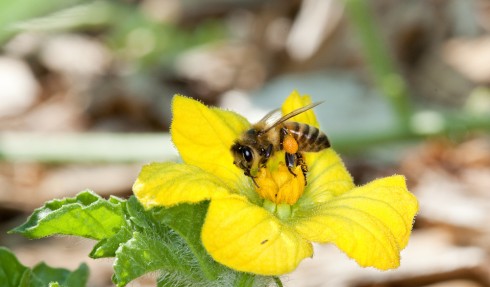
Photo by Stephen Ausmus/ARS/USDA
The Great Spring Strawberry Migration
This isn’t the first plant migration my yard has seen…last year I moved some “Snow on the Mountain” plants to make room for the raised beds I would build later….now being referred to as The Great Snow Migration.
This year I’ve decided to move some strawberry plants I planted last year from an 8′ x 4′ Raised Bed (32 sq. ft) to the other side of the driveway from the “snow” to a 25′ x ~3′ Driveway strip (75 sq. ft). I planted some blueberry plants in this strip last year, and they are doing great, but I didn’t have a vision for the rest of the bed…so Mother Nature decided to fill it in with weeds. 32 sq.ft just isn’t enough space for my strawberries to really thrive and it seemed like a poor use of a raised bed.
I’m happy with the move, I have a newly vacant raised bed in a prime location in my yard, and I can check off the drive-way beds as complete! (How how I love to check things off my list!)
Bugging Out
I’ve been inspired lately to attract “beneficial bugs” to my yard. Part of the attraction has been aesthetic (bug houses just look cool), part has been my desire to reuse every little thing that I (or someone else) would normally throw away, and part has been environmentally driven.
Aesthetics
Last weekend while wandering around the local garden center, an intensely satisfying habit of mine, I found some interesting bug homes. Since I’m planting espalier pear trees in my front yard I thought putting up some Orchard Mason Bee homes would be a good start.
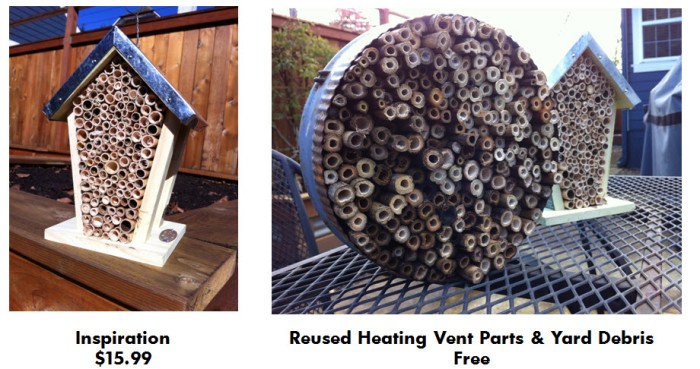
Resuse
Using the leftover bamboo (See Thinking About Planting Bamboo? Think Again….post from last fall) and a scrap heater vent part I picked up at the Rebuilding Center last year, I set about to build my own Mason Bee home. Some tips, try to pick bamboo with a wide hole in the middle and relatively thinner walls. Also, avoid the section of the bamboo known as the “sheath scar“. I found that the little bamboo tubes will not fit together snuggly if sheath scars are on the resulting bits of tube.
And I built a more general bug house from other HVAC parts, again inspired by some pre-built products I ran across during my wandering.
Environmental
If you are like me you have been sucked into an amazingly successful marking campaign for Cuties, an engineered mandarin orange. What is not to love? As sweet as a fruit can get without actually adding sugar, easy to peel, and no messy seeds! BUT (and isn’t there always a BUT?) These little modern miracles are not without their issues…as noted below via Smithsonian Magazine:
“The mandarin’s perfection, however, dispenses with a relationship that’s as old as flowering plants. Like all citrus, Cuties produce seeds when they’re pollinated. To produce a dependable snack, Cutie growers must protect their orchards from bees and other pollinators via nets, physical isolation, or other means. Effectively fencing out bees from huge sources of nectar, this widespread farming practice may be a contributing factor to hive collapse. Developers of the Tango, another mandarin variety, have bypassed this issue by producing a completely sterile fruit.”
Fencing off bees? I don’t know about you, but that can’t be a good thing. And this little snack is selling like gangbusters…which means farmers are pulling out other less profitable crops and planting these….which further reduces the habitat of our friend the pollinating bee. Damn It!!! I just can’t support that practice…which is why these tasty little snacks are now off my shopping list….and on my list is putting up a few more bee homes in my own yard.
My Conscious Living Wake-Up Plan
In the Beginning
Last year when I started this blog my main focus was my external world and associated projects. What I’ve learned in the last eleven months, is that to truly connect with my outside world I need to take a more holistic approach. So…I’m zooming out a bit and expanding the scope of this blog to include my entire journey. Instead of trying to limit my entries to those specific to projects related to biophillic design principles, I’m going to open this up (more formally) to entries that promote my journey into Conscious Living. My writing has already wondered about a bit as I’ve gone through some major emotional life changes this last year…this is just formalizing it a bit. I’m still intensely interested in biophillic design, particularly green roofing, and plan to look for ways to bring more of that type of thinking/doing into my everyday life and work, but I expect my writings this year will also include more about ways to provide self-care, promote enlightenment, and in general, live in a more conscious manner in all aspects of my life.
Now
For me, conscious living means living in the highest state of awareness as I can muster in the moment. It means having the courage to face the reality of the moment and not numb-out, sleep-walk or drift through my days. This can be scary; life is constantly changing, most noticeably when we don’t want it to. There are many teachings on the concept of the impermanence of life – the fluidity of the people, places, and situations that make up our world – and frankly sometimes it just seems easier to not think about all that and numbly do the next thing on my life until it’s time to go to bed, wake up and start over again.
My goal is simple, to raise my awareness whenever possible (and when it occurs to me) so that I can experience a deeper level of satisfaction with my actions, choices, and people in my life.
Where to start? I like to think in metaphors….and to carry forward the theme of my site (tar2trees) I think a tree provides perfect framework for my Wake-Up Plan. My plan is build a healthy root system from which to grow…focusing on my 3 core aspects that make up me:
- Mental Awareness – Reshaping thoughts and beliefs that have created who I think I am in the world
- Spiritual Awareness – Connectedness with something bigger than me
- Physical Awareness – Conscious actions toward a healthier embodiment of the Mental and Spiritual me
My belief is that by focusing what I believe are the roots of me, that I will be build a sturdy trunk, from which I can branch out and share/experience life on a deeper more connected level with the people and causes most important to me. I’m excited to see how the next 11 months unfold!
My “Tree of Life”
Master Bathroom Remodel
Finally…after living with a very uninspired and dysfunctional master bathroom I finally took the time this last fall to do a simple remodel. I was also motivated by the fact that my house only had one shower, downstairs, and I was getting a housemate and wanted us both to have private baths. I kept the footprint of the orginal Master bathroom the same but was able to replace a pedistal sink with a double vanity, adding tons of storage, and replacing a jetted tub with a huge glass tile shower. The pictures are not great (I need a real camera if I’m going to keep up this blog thing….), but in person it looks great.
I went with floor to ceiling glass tile and a pebble floor in the shower, and a ceramic tile in the vanity area. A heavy glass door, with thick glass on top of the shower walls. I did need to put in a smaller window, which actually looks much better fro the outside the large window did before.
- Wall & Floor Tiles: Home depot
- Bathroom Mirror/Sink/Vaintiy: IKEA
- Glass Shower: Custom
- Paint: TBD
- Hardware: TBD
Total cost? ~8-10k
House and Garage Get a Facelift
She is 84 after all…I’m sparing you the 3,000 pictures of the entire process showing the piles and piles of garbage and complete chaos a project like this creates…needless to say the neighborhood was VERY happy when this project was complete. Before the facelift, it really was one of the most unappealing houses on the block. The pink-ish vinyl siding wasn’t exactly vintage Portland. We built a new garage in 2011 with the intent of matching the pinkish siding, since we knew we couldn’t afford to reside the main house. But, as luck would have it, the contractor couldn’t locate this wondering siding…and feeling bad he offered to reside the entire main house at cost (love my contractor). Thank you ugly siding!!!!! It took another year to get to the main house but now it’s finally finished and results are very satisfying.
The Garage:
The original garage was completely useless, you can’t tell from the pictures but the roof was rotted and the interior was a scary, moldy, damp, mess. The seller did put a new door on the garage…what a surprise when I opened it to find a rotted core! I can’t tell you what a difference it makes to have a garage…the entire landscaping project of 2012 would not have possible without this new garage in place first.
Main House:
The issues with the main house may not be readily apparent from the pictures. The 2nd story addition that was added before the house was purchased in 2005 created a big, ugly, blank wall that faced the street – devoid of any architectural interest. The existing fence was also rotting off the rails. For the 1st 5 years the focus was on creating camouflage, knowing that new siding was too expensive. This consisted of planting >6 trees, 1 of which you can see on the left side of the top right picture, during “Operation Hide The House”. The new siding is HardiePlank, which is more in keeping with the stype of the neighborhood, and the darker color helps the house recede a bit and not stand out like a sore thumb as it did before.
2012 was a good year for curb appeal. It took 7 years but now I feel proud of my house when I drive up instead of apologetic. The neighbors are VERY happy, and it will now free me up to focus on overhauling the front yard and curbs this spring/summer.



